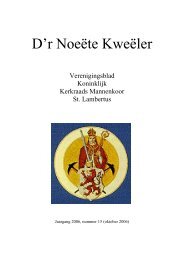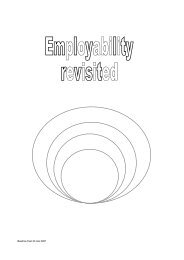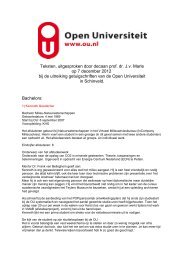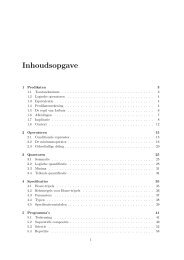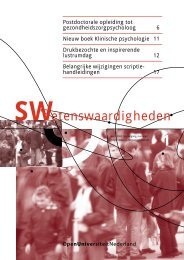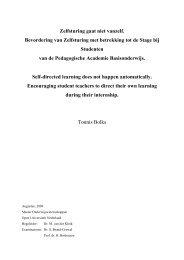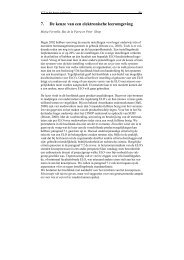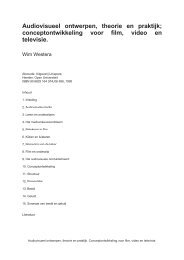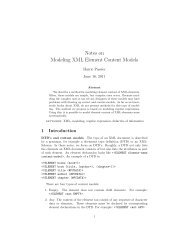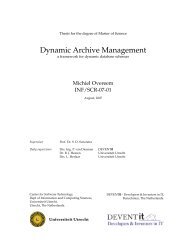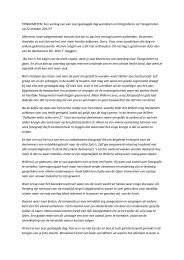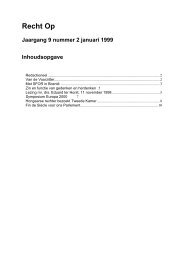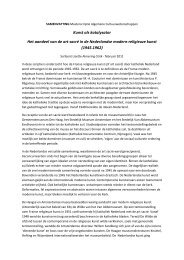Proceedings - Toegepaste Wiskunde - TU Delft
Proceedings - Toegepaste Wiskunde - TU Delft
Proceedings - Toegepaste Wiskunde - TU Delft
You also want an ePaper? Increase the reach of your titles
YUMPU automatically turns print PDFs into web optimized ePapers that Google loves.
<strong>Proceedings</strong> NIOC 2011<br />
3 The MathDox Format<br />
MathDox sources combine in a modular way various existing XML formats. Each format<br />
contributes a useful facet for interactive documents. The main XML formats used in<br />
MathDox are:<br />
– DocBook, for structuring documents<br />
– OpenMath, for semantic encoding of mathematics.<br />
– Xforms<br />
– Jelly, a programming and scripting format.<br />
These formats, their use and purpose, will be discussed.<br />
3.1 DOCBOOK<br />
DocBook is a well-known documentation standard, see (Walsh, 1999). Its logical structure<br />
facilitates searching and parsing of specific elements, enabling easy translation into other<br />
formats including HTML and PDF.<br />
3.2 OPENMATH<br />
Within MathDox mathematics appears in various forms: Mathematics as used in<br />
computations by software packages or mathematics solely meant for the user to read<br />
or sometimes for both the computer and the user. For each type of usage one wants<br />
mathematics to have specific properties. In general a user will be able to grasp the<br />
meaning behind a, possibly ambiguous, mathematical expression. Computer software,<br />
however, will need its mathematics to be completely unambiguous, since it cannot benefit<br />
from the context in the way a mathematically skilled reader does in order to solve gaps<br />
caused by incompleteness and ambiguity.<br />
OpenMath, see (Buswell et al, 2004) has been chosen as the main format for mathematics<br />
within MathDox documents. It is well suited because it is semantically rich, unambiguous,<br />
XML-based and can easily be transformed into other formats, such as MathML and LaTeX,<br />
which are better suited for presentation. These transformations allow MathDox<br />
documents to use OpenMath where semantics are important and switch to MathML or<br />
LaTeX, when the mathematics need to be presented to the user either on screen or on<br />
paper.<br />
3.3 XFORMS<br />
XForms (http://www.w3.org/TR/xforms11/) in MathDox documents supplies a means<br />
of interaction with the reader of the MathDox document. It allows for many interaction<br />
(form) elements which can be used for user input, such as text fields (also formulas),<br />
radio buttons, and drop down menus. In MathDox the XForms elements are used to<br />
trigger interaction with mathematical services like computer algebra systems.<br />
3.4 JELLY<br />
To specify and fine-tune reactions of a MathDox document to user input, an author<br />
needs programming constructs. For this purpose Jelly (http://commons.apache.org/jelly/)<br />
has been included in the MathDox format. Jelly is a JSP-like XML-language<br />
(http://java.sun.com/products/jsp/), and has been developed as part of the Apache project<br />
(http://www.apache.org/). Jelly can be used for conditional statements, loops, variables,<br />
calls to Java (http://java.sun.com/) objects and calls to web services.<br />
58



